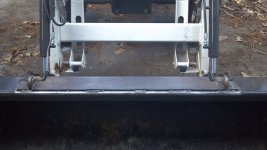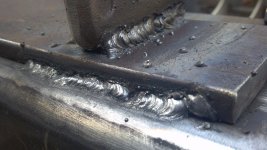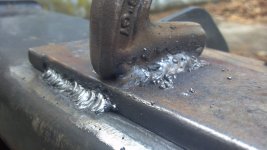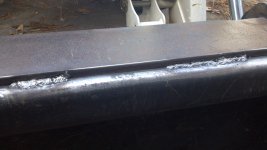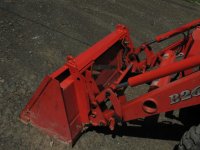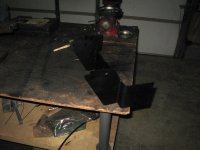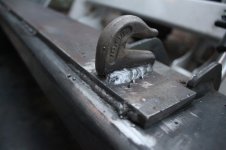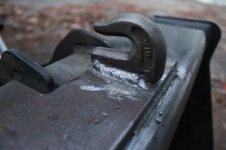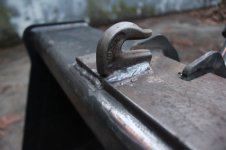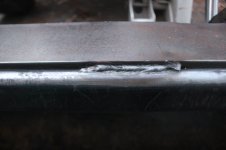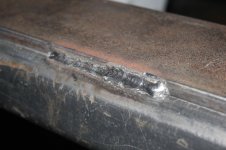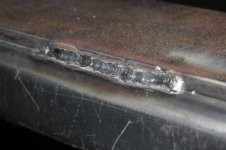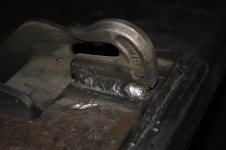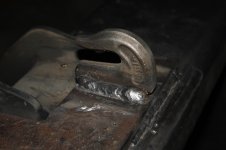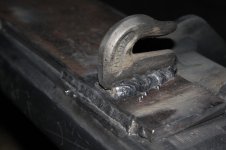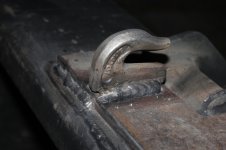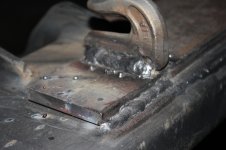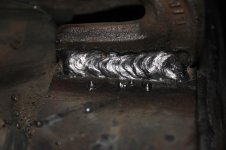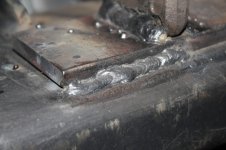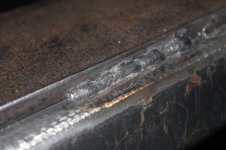I suppose that the welds look pretty good for a beginner. NOW what you need to do is put a grinder blade on and grind all the knots off the weld and make them kind of uniform. Then take some 7018 and run two more passes on each bead. Start with one of them on the bottom and keep the center of your puddle on the edge of the weld so you are putting weld metal on the base and about half of it overlapping the original weld bead. Clean it up with power brush to remove all the slag then weld another bead on top of that one. This bead should tie into the bottom bead and overlap the top edge of the original bead. One the first pass your rod and should be about 45 degrees from horizontal like thus?/ more or less. The 2nd pass the rod needs to be more horizontal and pointed into that undercut. Go slow and let the 7018 fill in that undercut but firs make sure that you grind it so you have removed all the porosity and slag from the undercut. If you prep those ugly welds with a grinder to make them smoother and more uniform, your subsequent passes will look lots better. Welding over ugly just makes more ugly. I learned that early in my welding career. If you mess up say by not properly cleaning the metal and the weld comes our with bug holes (porosity), lumps, low spots etc, that is why they invented grinders. Grind it fairly smooth and weld over it. The secret to smooth uniform welds is travel speed. Keep it fairly constant unless you have a low spot to fill in then just a bit of hesitation to let the rod burn a little longer there then start back with you normal travel speed. Most beginners try to travel too fast, slow down and give the rod time to burn and most of that undercut will fill in unless you are running way too many amps.
Many of your welds are a little skimpy so extra passes are needed anyway. Leave 2 or 3 smaller beads on your cap (top pass) rather than trying to make one huge pass.
Finally weld all the way around the hook. This will keep moisture from getting underneath it and rusting out the plate underneath. You may get a small flare like a little volcano from vent gas when you finally close it off but just let the flare die down and the weld cool off then fill in the little hole.
I attached a couple of photos of my hooks and a bracket I built but the braket photo isnt very good but I cant delete it> You can see how I wrapped the weld around the hooks on my Kubota
